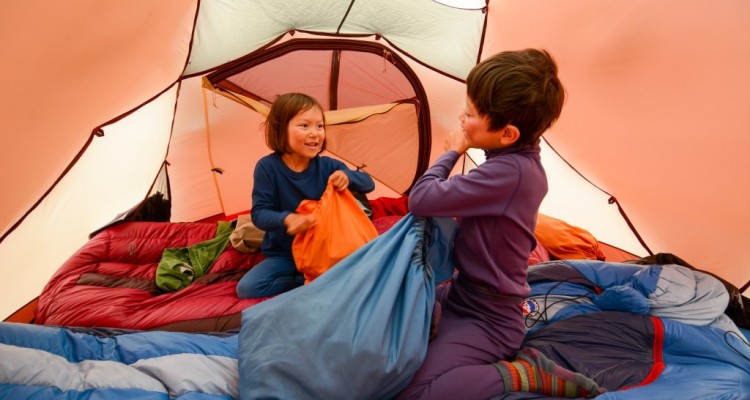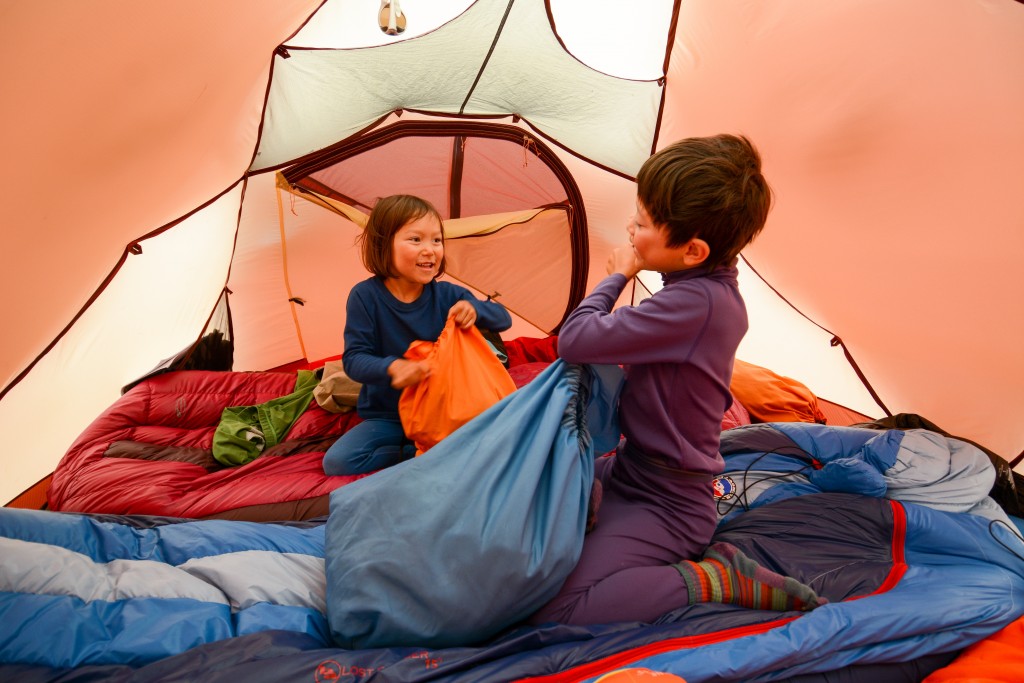The floor of the unattended ferry terminal in the Chilean hinterlands is crammed with a dozen cyclists trying to avoid the torrential rainfall outside. Everything is wet, but we are all happy until the lights go out and everyone goes to sleep. I am surprised that it’s not snoring that keeps us all awake, but the squeaks of a cheap sleeping pad that fill the night. I lay back content that my thin foam pad is quiet and feel that hundreds of nights on this aging mattress justify my disdain.
However, as the decades start to add up my back aches a bit more each morning, and the lumps beneath the tent just seem a little bit less forgiving. This summer I found myself heading into the wilderness for a couple of months with a new sleeping system, a Big Agnes Lost Ranger System sleeping bag and ridiculously lofty four-inch thick Q-Core Insulated mattress.
The Big Agnes System sleeping bags have a handy compartment that holds the pad in place so you are guaranteed not to roll off onto the turf in the middle of the night. The sleeping bags also don’t waste any insulation on the bottom side where your slumbering bones compress all of the fluff. Instead, all of the down is above board in a roomy cocoon that is spacious enough to pull your knees up to your chest to take your socks off at night, do some morning stretching, or accommodate any nighttime contortions that you are accustomed to in your king sized bed at home.
Partner to the Lost Ranger bag for the summer was a Q-Core Insulated air mat. This pad is at least four times more comfortable than the skimpy inch thick pad I have used for years. But there is more to them than just more volume. The Q-Core pads have a slightly concave cross section that keeps you cupped in quiet warmth and encourages you to roll back onto your mat, rather than onto your sleeping tent mates. The pads are also great once their are rolled up and stowed, because they roll up smaller than my old mat. The only challenge we faced was how to get enough air into the mattress without fainting. Just figure that if the mat is four times more comfortable it is going to require four times the air! We settled on using the pump from our SUP to inflate the pads.
This summer we paddled the boundary of tundra and boreal forest, finding nothing but boulders and hummocky bogs to pitch camp on each night. The four inches of padding in the insulated mats covered up even the most severe of inconsistencies. We could feel rocks and lumps when we were sitting up, but they would disappear when we faded into repose. The system sleeping bags were equally comfortable in a wide range of temperatures. A picture of the inside of our tent shows corner to corner bags and mats, not too dissimilar to that ferry terminal in Chile, but with one major exception – the Big Agnes bags and mats don’t make any noise when someone shifts in the night!

Campfire Chronicles: Dan Clark’s Favorite Piece of Gear
Campfire Chronicles: Dan Clark’s Favorite Piece of Gear
4.8Overall Score

Leave a Reply
You must be logged in to post a comment.